Wearables making a big splash in Olympic swimming this year
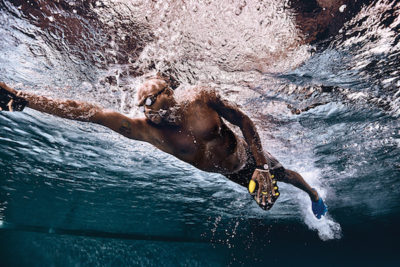
It’s been another wild year in swimming at the 2016 Rio Olympics. The last events wrap up today, but it’s been hard to miss the appearance of more technology poolside this year, even if all you noticed were the headphones helping Michael Phelps maintain his death-stare:
But getting into the zone while on deck isn’t that new. Getting closer to a world record is the greater goal of all this new technology. Here’s what you might have seen in swimmer’s bags this year:
The Misfit Shine
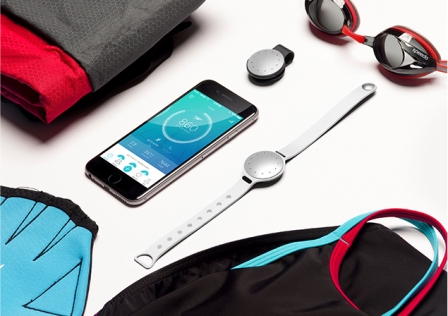
In June, wearables company Misfit and well know sports swimming brand Speedo announced the launch of their second Speedo-branded activity, swim, and sleep tracker, Misfit Shine 2 Swimmers Edition. Misfit and Speedo’s proprietary lap counting algorithms track a swimmer’s lap count with industry-leading accuracy and work for all stroke types.
New features with Speedo Shine include:
- A vibration motor and multicolor lights, enabling multi-faceted user feedback—see progress and tell time in a halo of rainbow-colored lights, or get motivated with Misfit Move activity
- A countdown swim timer—users pick a time to swim and Speedo Shine 2 provides a gentle vibe alert when a workout is complete
- Text and call notifications and a silent vibe alarm
- Misfit Link compatibility, turning Speedo Shine 2 into a music remote, selfie trigger, presentation clicker, or button to enable a variety of smart home devices and web services
VTT wearable sensors
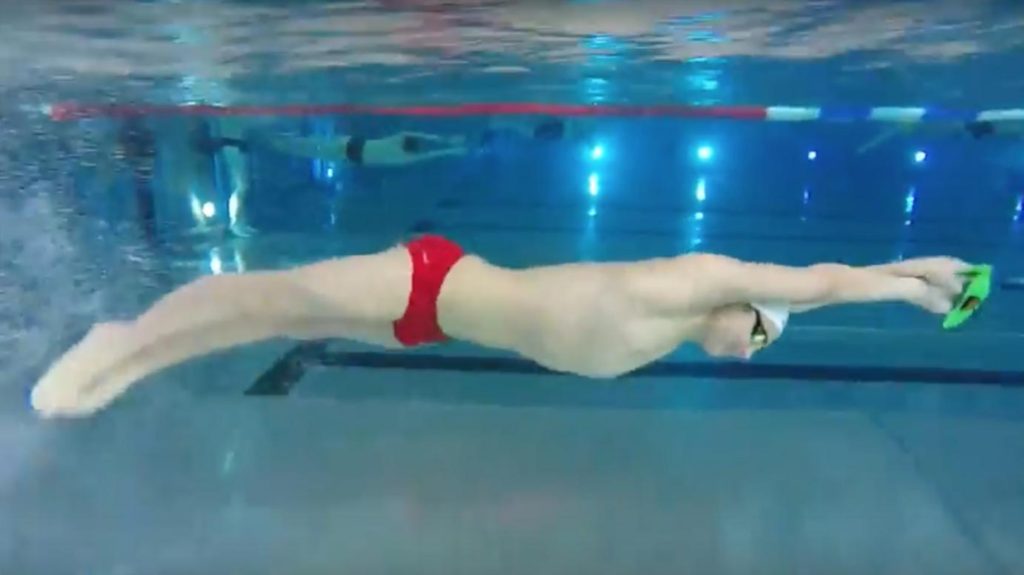
In cooperation with Finland’s national swimming team and archery association, VTT Technical Research Centre of Finland has developed wearable technology for improving sports performance. Wearable sensors can be attached to, say, a swimmer’s hand paddles or an archer’s equipment. From there, data is wirelessly transferred to the coach’s smartphone or tablet.
The sensors embedded in the paddles provide surprisingly precise and varied data on the wearer’s swimming technique. This covers stroke length and changes in it during swimming, the relationship between the outward stroke and recovery, the structure of the stroke and the average pull, the hand position and the pressure exerted by the stroke in different directions. According to Simo Karvinen, the Finnish Junior Olympic Team coach:
“Swimming is an unusual sport because it is not easy for the athlete to check his or her own performance in the water. In addition, very few means are available of measuring development in the swimmer’s technique, in terms such as the efficiency of hand strokes. VTT’s technology provides a means of directly observing the power of each hand stroke and its trajectory through the water, without disrupting performance.”
Using sound data to boost performance
Researchers at Bielefeld University have developed a system that professional swimmers can use to optimize their swimming technique. It enables swimmers to hear, in real time, how the pressure of the water flows created by the swimmer changes with their movements. This gives the swimmer an advantage over their competitors because they can refine the execution of their technique. This “Swimming Sonification” system was developed at the Cluster of Excellence Cognitive Interaction Technology (CITEC) of Bielefeld University.
Dr. Thomas Hermann of CITEC is working on converting data into sounds that can be used to benefit the listener. This is called sonification, a process in which measured data values are systematically turned into audible sounds and noises. “In this project, we are using the pressure from water flows as the data source,” says Hermann. “We convert into sound how the pressure of water flows changes while swimming – in real time. We play the sounds to the swimmer over headphones so that they can then adjust their movements based on what they hear,” explains Hermann.
This system includes two gloves worn during practice, featuring thin tube ends that serve as pressure sensors and are fixed between the fingers. The tubes are linked to a measuring device that transmits data about water flow pressure to a laptop. Custom-made software then sonifies the data; it turns the information into sound. The sounds are transmitted to the swimmer in real time over headphones. When the swimmer modifies a movement, he hears live how this also changes the sound.
In a practical workshop held in September 2015, professional swimmers tested the system out and confirmed that it indeed helped them to optimize their swimming technique. Of the ten swimmers who participated, three of them qualified for international competitions, and one of the female swimmers is competing this year at the Paralympics in Rio de Janeiro, Brazil.
The researchers want to continue developing their current prototype. “We are planning to develop a wearable system that can be used independently by the user, without the help of others,” says Thomas Hermann. In addition to this, the new sonification method is planned to be incorporated into long-term training programs in cooperation with swim clubs.
Samsung blind cap
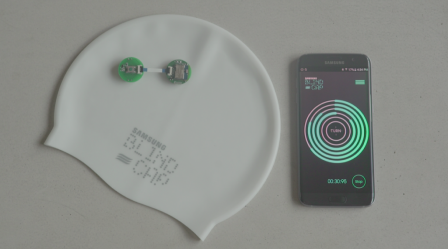
Samsung’s latest innovation is a special swimming cap that vibrates to alert the swimmers precisely when to do their flip turn at the end of the pool. The Blind Cap eliminates the need for a coach or guide to physically tap the swimmer with a pole to indicate the lane coming to an end — the method used since swimming for the blind was established as an official Paralympic sport in 1960.
The Blind Cap is equipped with a vibrating sensor and Bluetooth technology. It synchronizes with the Samsung Gear S2 smartwatch and any Android smartphone to work in conjunction with an app. This allows the swimmer’s coach to send a warning signal from their smartphone or smartwatch, which is converted into a vibration within the cap of the blind swimmer, prompting the swimmer to turn without additional help.
What about swimming googles?
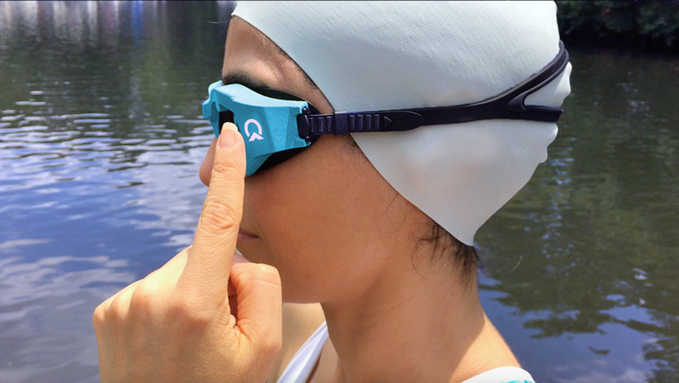
Evidence suggests that connected googles are indeed on the way but seem to be taking longer in manufacturing than anticipated. OnCourse Googles is created googles designed for open water swimming (ok, so technically these are more for the World Aquatic Games than the Olympics) to help keep the wearer swimming in a straight line using a pair of subtle LEDs. The goggles analyze the direction the user is swimming and if they veer off course. LEDs notify them of which direction they need to swim in order to remain on course as well as the severity of deviation.
These were predicted to be launched in the summer of 2016 but remain absent. Israel based startup Instabeat has also created smart googles that specifically measure a swimmer’s heartbeat. However they’ve been subject to significant delays of over two years and are pledging to go to retail in Q1 2017.
In a sport where the difference between winning and losing is a hundredth of a second, there are no doubt boxes of technological innovations that are kept under wraps by the Olympic teams.
We’ll probably only become aware of these if medalists and their media machine sponsors, decide to share the word.
The post Wearables making a big splash in Olympic swimming this year appeared first on ReadWrite.
(41)